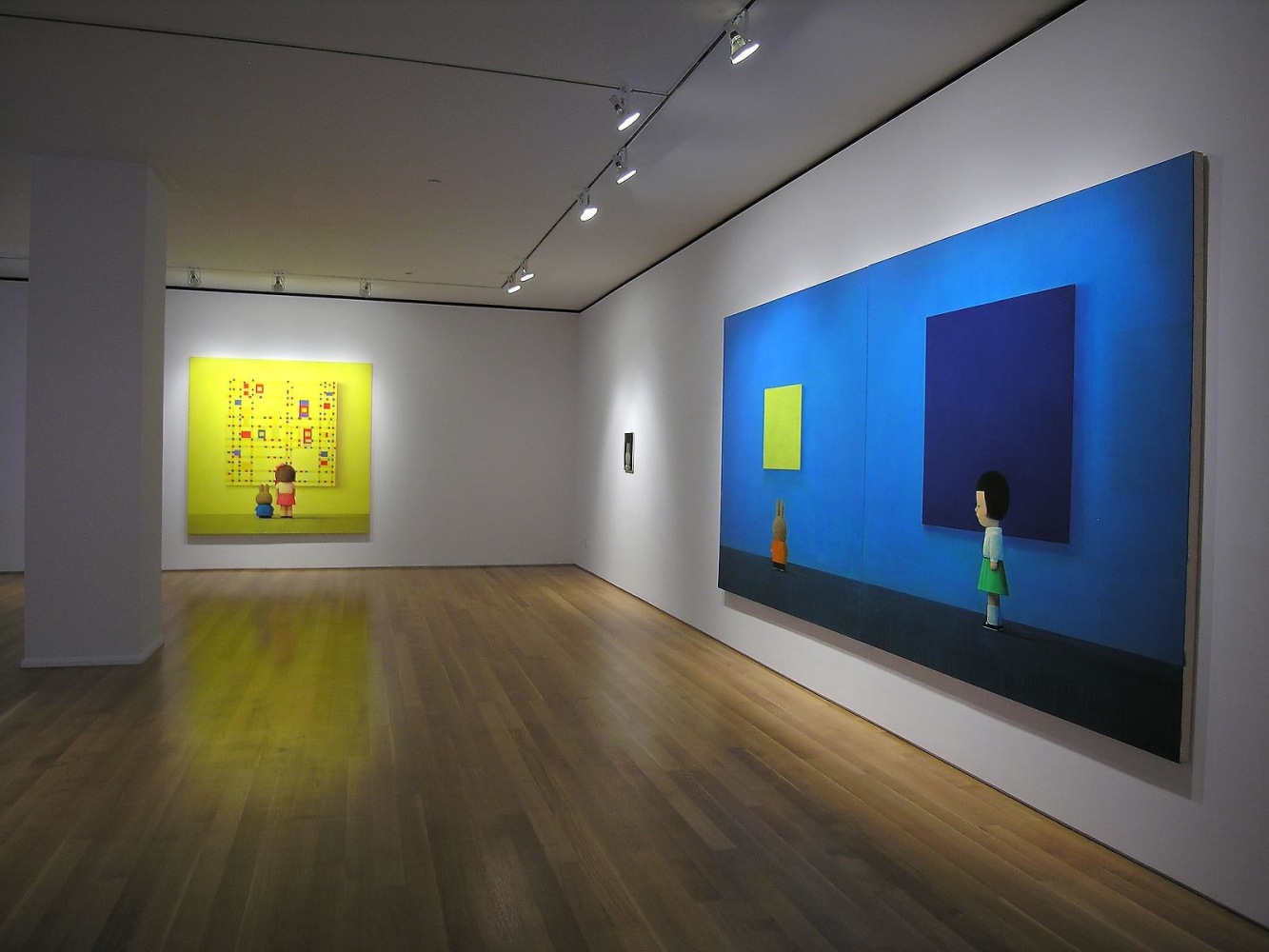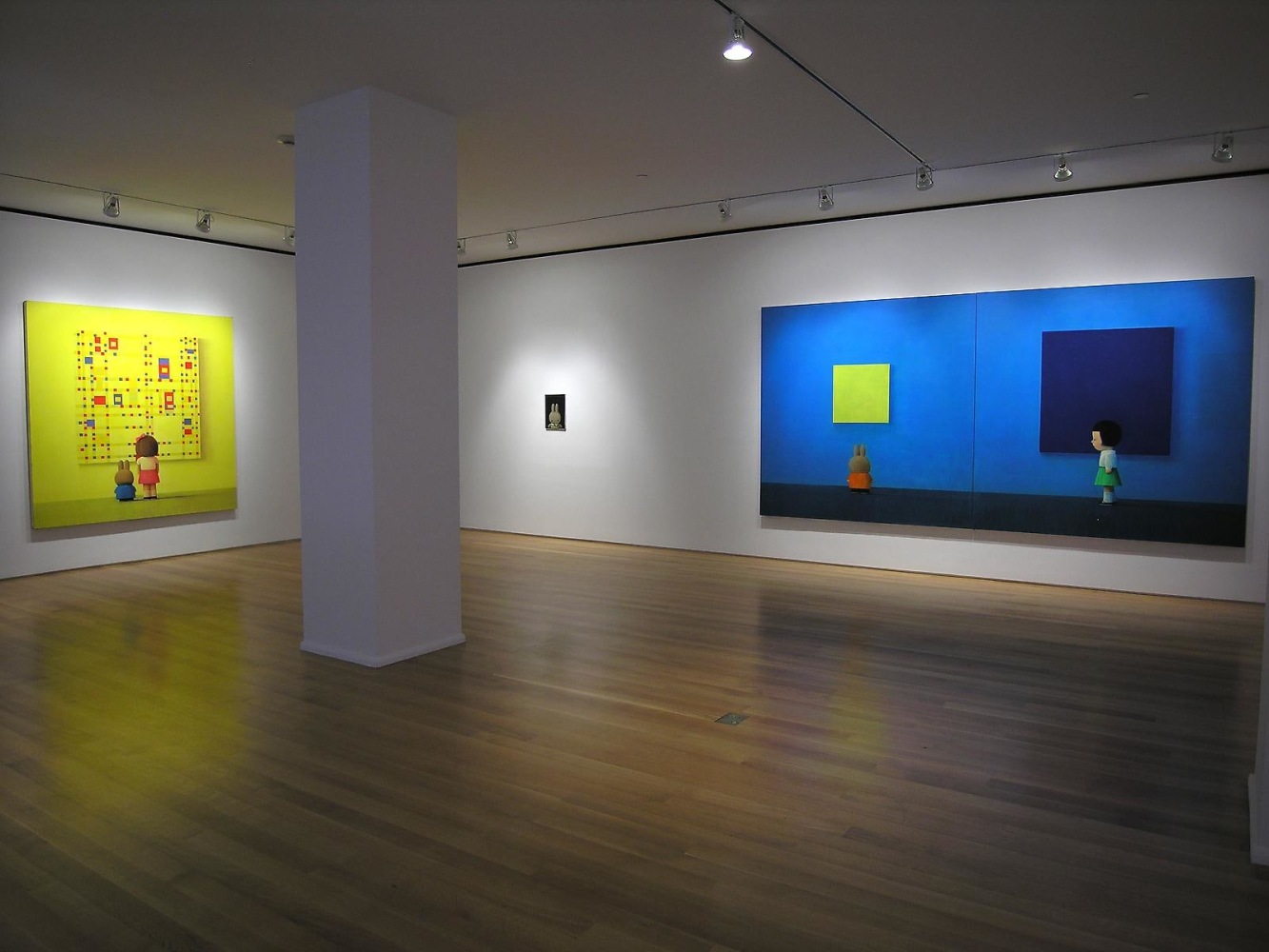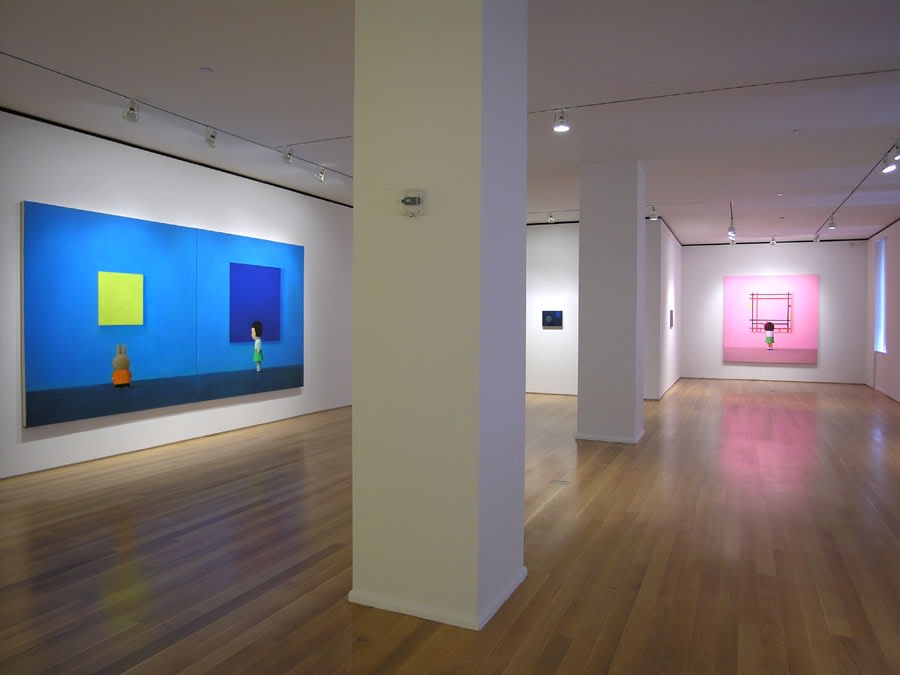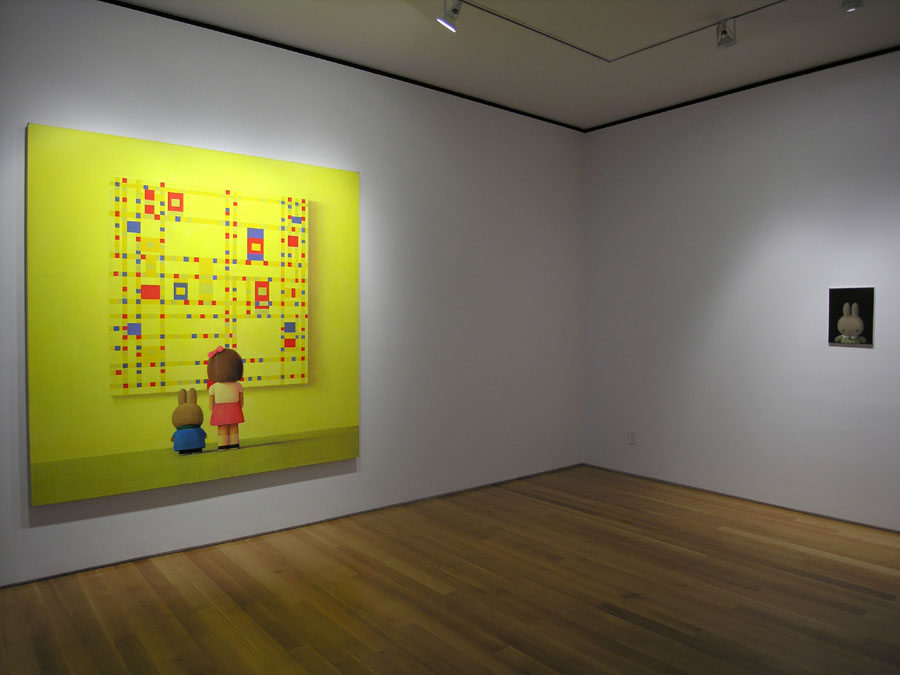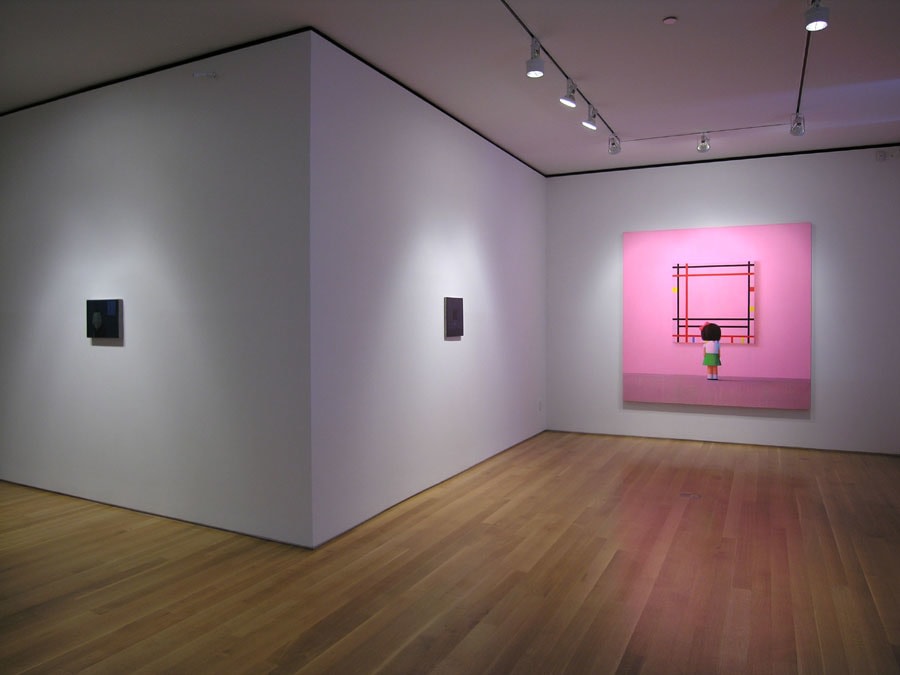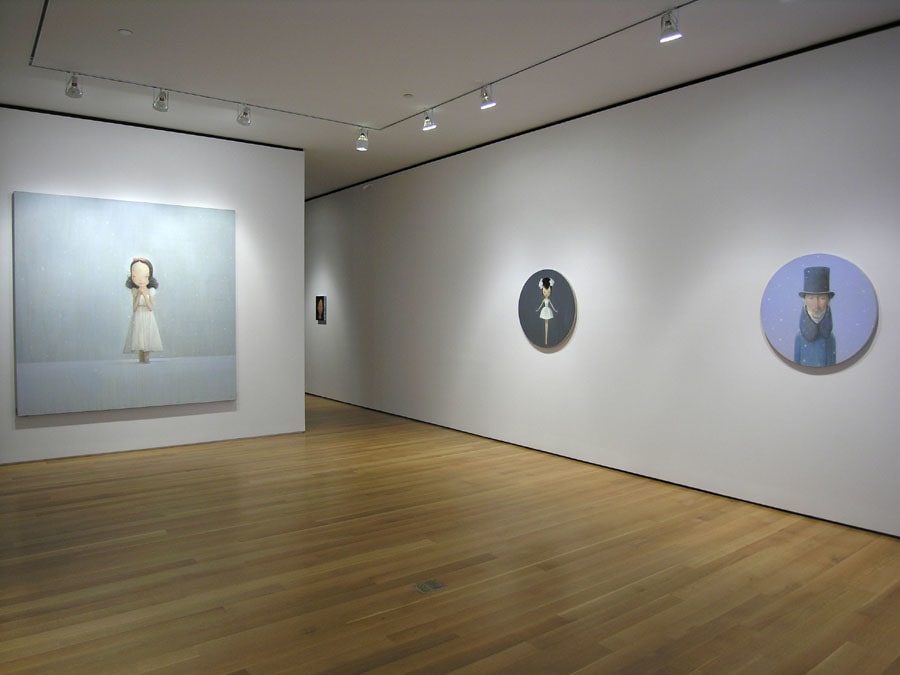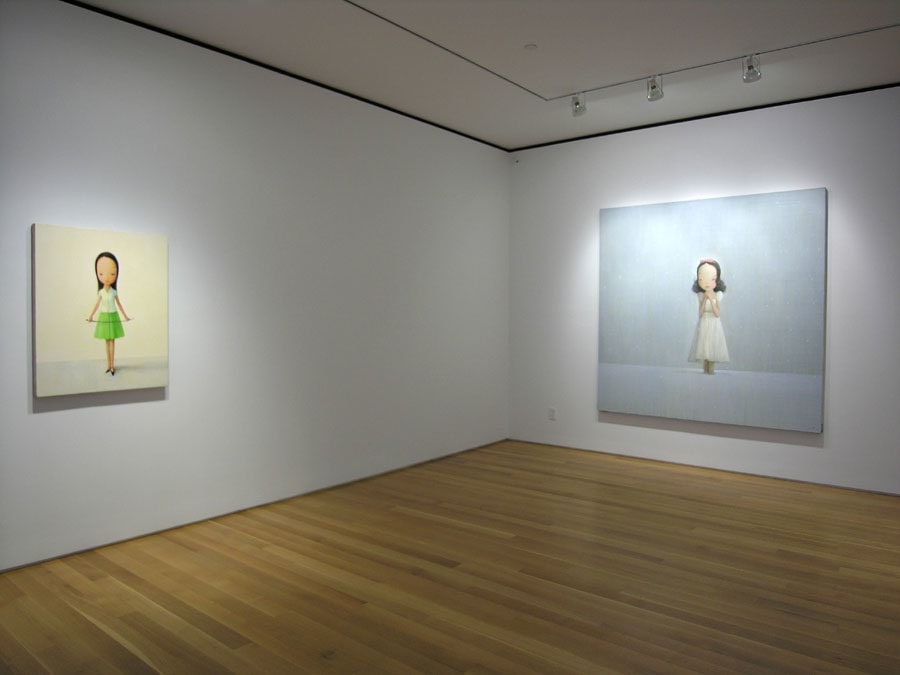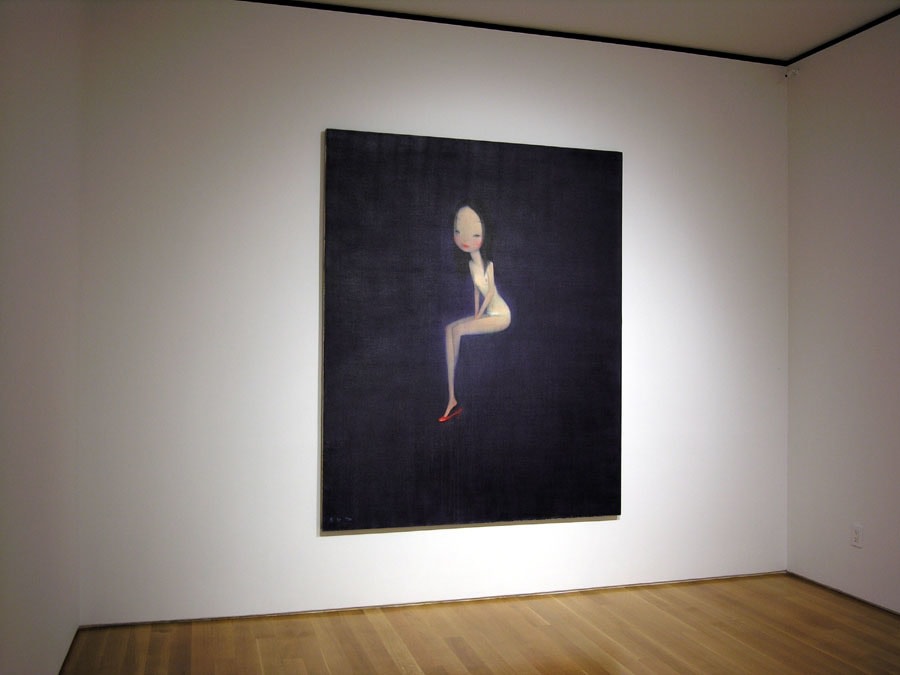Liu Ye
Temptations
Sperone Westwater, New York
14 September – 28 October 2006
Press Release
Sperone Westwater is pleased to announce the U.S. debut of the Chinese painter Liu Ye. Born in Beijing in 1964, Liu Ye studied industrial design and mural painting at the Central Academy of Fine Arts before moving to Germany to pursue an MFA at the Fine Arts University in Berlin. His work has been exhibited extensively in China and Germany, and is well represented in the Uli Sigg Collection of contemporary Chinese art in Switzerland, but has never before been shown in North America. Sixteen new paintings will be on view in the artist’s first exhibition in New York.
Liu Ye’s lush canvases, painted in primary colors, reflect the "forbidden" imagery passed down from his father, who was a children's book author during the Cultural Revolution, when political censorship controlled all visual and written materials. Young girls with small bodies and large moon-like faces populate these paintings, schoolgirls dressed in matching green skirts and white blouses and sporting uniform haircuts, and slim, semi-nude women who carry whips which allude to a darker sexual truth behind their youthful façades. According to art historian Pi Li, “Liu Ye’s work implied the arrival of a new era concerned with individualism and the self.” Indeed, in the mid-1990s, when Liu Ye returned from his studies in Europe, China was transitioning into a market economy and these changes manifested themselves in many ways, including increased artistic freedom and a general shift from collectivism to individualism. Liu Ye’s paintings reflect this changing national legacy with their myriad references to both popular "pulp noir" and classical Chinese landscape traditions. As a result, the richly atmospheric canvases seem nearly timeless, their pictorial language belonging simultaneously to the past, present and future.
Liu Ye spent most of the 1990s in Europe, first in Germany and then in Holland, where he spent time as an artist-in-residence. It was here that the artist first encountered works of art by Mondrian and Vermeer, two artists whose use of color, line and composition would inform Liu Ye’s own paintings throughout his career. The cast of characters in Liu Ye’s work often find themselves standing in front of a Mondrian painting, an object which the artist identifies as “a balanced, graceful and pure picture that projects a sense of serenity.” However, despite their cheery primary palette and varied art historical references, Liu Ye’s paintings have a darker undertone. In “Night,” a topless young girl sits ensconced in a sea of dark blue wearing only white underpants and one red shoe; in “Sword,” two identical young girls face each other across a blood red vista, each with dagger in hand. There is a strong sense of innocence lost in these paintings, no doubt the result of growing up in the throes of Mao’s China where childhood was controlled and often compromised.
The realities of his youth led Liu Ye to become fascinated with the imaginary world of fairy tales, and three works inspired by the stories of Hans Christian Andersen are included in the exhibition. “I have an equal passion towards both fairy tales and philosophy,” the artist has written. “Fairy tales are illusioned and sensational whereas philosophy is about strict and rational thinking. My paintings ramble between these two opponent spheres.” However, Liu Ye’s work is about more than simply the juxtaposition of east and west, history and national identity; indeed, the artist has found his own artistic idiom by presenting the obvious and mixing recognizable symbols and signs with elements of surprise, subversive humor, and absurdity.
A catalogue with color reproductions accompanies the exhibition.
